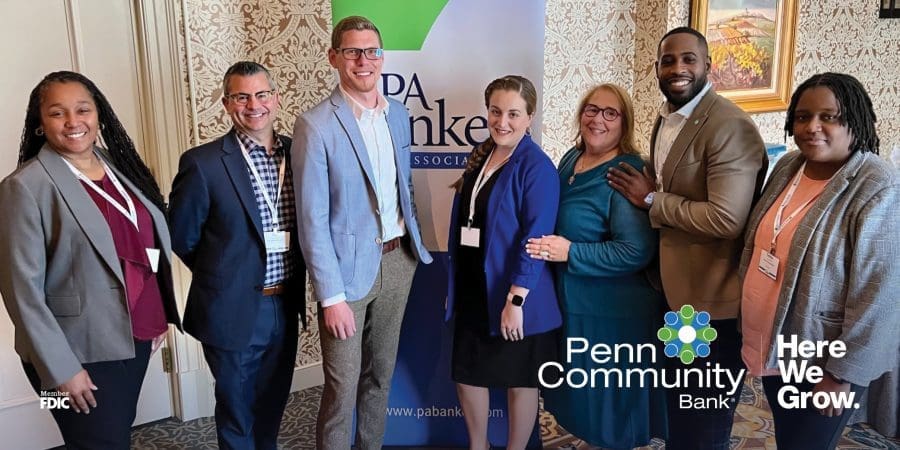
When Penn Community Bank launched it’s first-ever diversity committee in 2018 with a vision to see our team reflect the diversity of our community so we can be a stronger and more influential organization, then-accountant Falesha Grasty quickly realized that “this is not a one a done thing.”
Soon rising to chair of the committee, the now-Vice President and Diversity, Equity, and Inclusion (DE&I) Officer, Falesha now has a hand in everything from recruiting to strategic planning. We spoke to our very own DE&I Officer about the value of diversity, equity, and inclusion in the workplace, the role of financial institutions in promoting diversity in the larger community, and current initiatives at Penn Community Bank.
DE&I
The DE&I Department is guided by a three-year strategic plan that focuses on three key areas: workforce, workplace, and marketplace. Since taking on the role, Falesha’s objective has been to enhance what the bank was already doing within these areas and identify areas for improvement.
Falling under the Human Resources Department, her role allows her to research data from the bank and beyond to discover why people are coming to or leaving a particular position or department in order to address any barrier that may be in place. With this data, she can help make decisions on how we recruit – from where we find team members to the questions asked during an interview. Additionally, Falesha collaborates with departments to ensure we work with a diverse group of vendors (i.e. women-owned, minority-owned) and revises policy language to establish inclusivity.
“Just because ‘it’s always been done that way,’ doesn’t mean it’s the right way,” she says in regard to updating policies and procedures to be inclusive and equitable for all team members.
ERGs
After the recruiting and hiring process ends, it’s important to reflect on what efforts are in place to make sure this diverse group feels welcome, comfortable, and has the tools they need to grow.
In less than two years since the first was created, Penn Community Bank employee resource groups (ERGs) have proven to be a crucial component in promoting a sense of belonging. These employee-led groups serve as a way for team members to connect with like-minded co-workers on a deeper level, and seek out and participate in events that celebrate diversity.
The Women’s Networking ERG and Multi-Ethnic ERG meet regularly and engage participants with inspiring guest speakers, panels on relevant topics, professional development opportunities, and ways to get involved in the community. New ERGs kicking off in the coming weeks: a group for LGBTQ+ team members and allies and a group for military veterans.
A True Commitment
It takes a village to ensure diversity, equity, and inclusion are top-of-mind throughout each facet of a large organization. From residential lending and retail to marketing and human resources, each department has a part in amplifying the initiatives and impact of DE&I. They are interacting with customers and team members organically and Falesha values the close relationship she has with each area of the bank and their comfortability to ask questions, make suggestions, learn, and make a difference.
Q&A with Falesha Grasty
What role do banks and financial institutions play in promoting DE&I in the larger community?
Banks are a very instrumental component in keeping our communities thriving. It’s more than business, we’re rooted in the community and we’re there to be a resource. Financial literacy is just one way we do our part in getting financial education out to people in the area who may not normally come into contact with a bank. It’s about reaching parts of the community who you typically wouldn’t interact with.
What are some of the challenges banks face in promoting DE&I and how do you work to address them?
Trust is a huge thing. A lot of people don’t trust the banking industry so it’s important to work to not let history repeat itself. Not that long ago, certain groups of people weren’t allowed to open a bank account. When these groups come through the door today, they want to see people that look like them – it’s where a lot of the trust comes from. We also have to educate people that their money is safe with us, while clearly communicating and being transparent about what may be going on in the economy.
Why is National Diversity Month important? In the coming years, how do you hope to see National Diversity Month evolve?
National Diversity Month is a representation of what the world looks like on a daily basis. It takes all the individual things that each of us celebrate and focuses on the intersectionality of it. We learn about individual heritages throughout the year, and National Diversity Month is a time to bring it all together. It’s a time we can see the differences in everyone, connect with them, and celebrate them.


